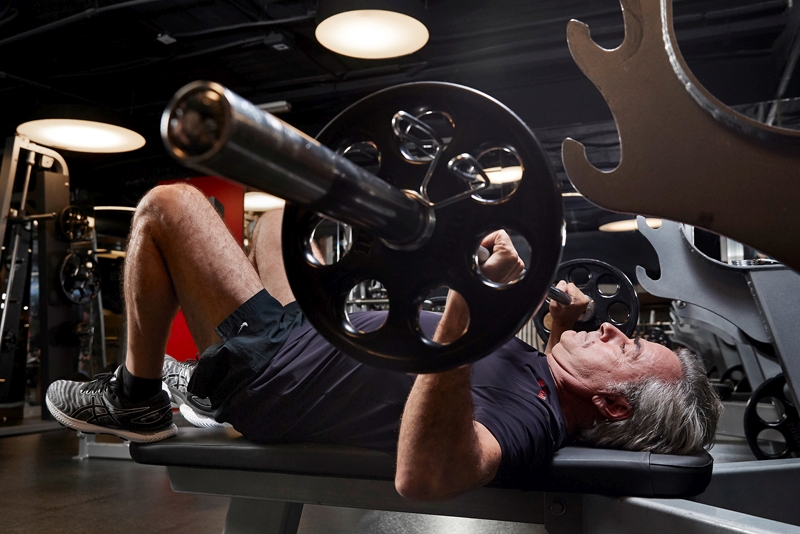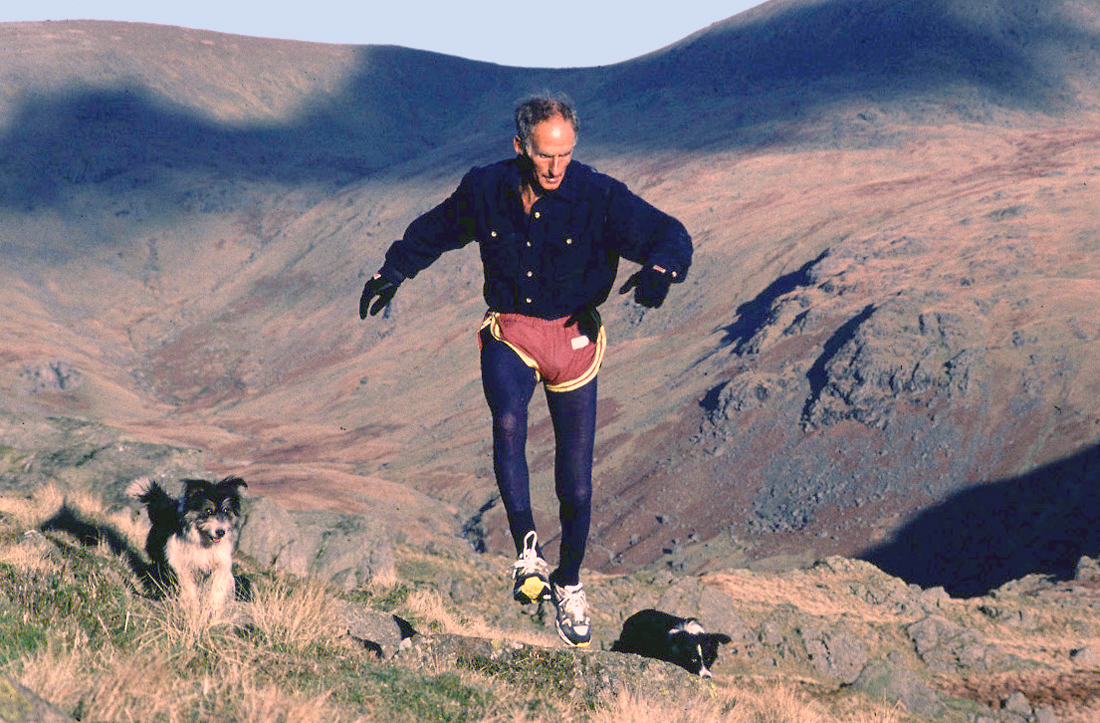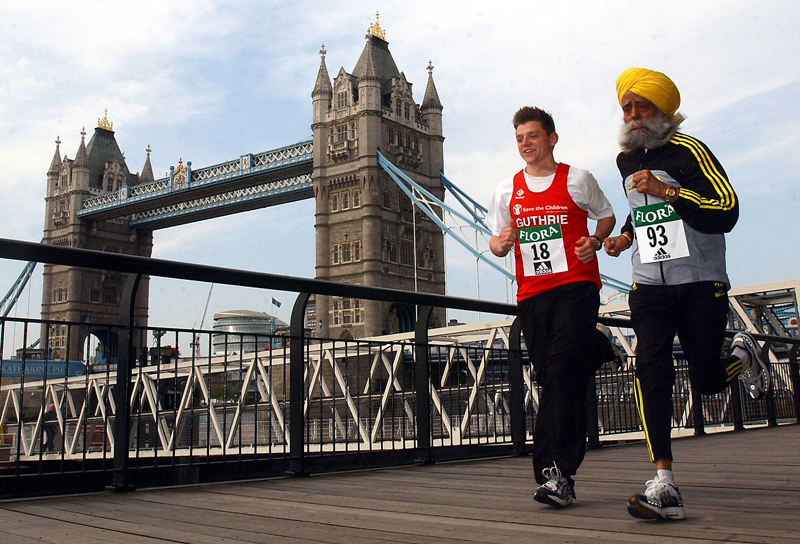The aging athlete: train your brain – with strength!

The arrow of time is relentless, and it’s a fact of life for athletes that as the years tick by, performance firstly levels off then declines. In terms of physical performance declines, one of the most common features of the aging process is an inevitable the loss of muscle mass, strength and muscle function(1).
However, there are also a number of other age-related changes that affect everyone (not just athletes), and which can impact performance and well being. These include other physiological changes such as elevated systemic and chronic inflammation, which is not only associated with an increased risk of certain degenerative diseases, but also partly accounts for muscles that are more sore and slower to recover after training(2). In addition, cognitive decline – especially in later years – also takes its toll due to a progressive structural and functional degradation of the brain, with altered and impaired brain metabolism(3-6).
Exercise, aging and brain health
There’s already been a large body of research showing that keeping training into old age is an excellent approach for slowing the physical age-related declines typically observed in the population at large – see this two-part article for an in-depth discussion of the scientific evidence and strategies that older athletes can deploy! But can any of these strategies also help slow the decline in cognitive function that is now so commonly observed in seniors? The good news is that recent research has found that certain exercise-based intervention strategies for older adults can mitigate or even reverse (to some extent) these age-associated cognitive impairments caused by declines of neuromuscular structures and neuronal loss in the brain(7-9).
So far, nearly all of the studies into the links between brain health, cognitive performance and exercise have focussed on aerobic-type (ie endurance) training interventions(10). In particular, the effect of aerobic-type exercise on brain metabolism and important molecules involved in brain structure and neurological function have been intensively examined(11,12).
By contrast, there is very little evidence regarding the influence of resistance/strength training on these aspects of brain function and health. This is despite the fact that studies over the past eight years have established a strong link between muscular strength and cognitive function in older adults(13). As an illustration, in one study, researchers found that higher quadriceps strength was independently associated with better cognitive function in the elderly population(14). However an association between strength and brain health doesn’t necessarily imply causality. It could be for example that older people with better cognitive function are more likely to be physically active and therefore stronger. What is really needed is an intervention study looking at strength training, strength gains and any subsequent impacts and improvements in brain function.
New research
For definitive answers, we can look to a new study on resistance training and brain health carried out by a multinational team of Lithuanian, Belgium and Dutch scientists(15). Published last month in the journal ‘Geroscience’, this study explored the effects of 12 weeks of resistance training on three key neurotransmitters in three different regions of the brain, all of which are markers of brain health and cognitive function.
In this 12-week intervention study, 41 older adults (18 males and 23 females) aged 60+ participated, and were randomized into either an experimental group carrying out supervised resistance training or a control group who performed no training but simply continued their daily activities. Because this study was designed to track muscle and brain function changes, no participants any with central nervous system (CNS) injuries, alcohol abuse, diabetes, musculoskeletal disorders or neurodegenerative diseases were included.
What they did
Before the study intervention, all the participants underwent a global cognitive assessment test (the Montreal Cognitive Assessment - MoCA). The participants were stratified into subgroups based on a MoCA cut-off score of 26. Subsequently, participants with similar scores were paired and then randomly allocated to the experimental and control group. This ensured that both groups had equivalent numbers of participants with similar MoCA scores.
Before and after the trial, all the participants underwent a very sophisticated form of brain scanning known as ‘proton magnetic resonance spectroscopy’. This form of scanning uses very powerful magnetic fields and radio waves, and is very effective at determining the presence and concentration of organic molecules, such as key neurochemicals involved in brain function. In particular, three main brain regions were scanned: the hippocampus, primary sensorimotor cortex, and pre-frontal cortex, all of which play a vital role in cognition. The researchers were interested in the amounts and ratios of key neurochemicals in each of these three brain regions, including:
· Total NAA (tNAA) - composed of N-acetyl aspartate and N-acetyl glutamate
· Total Cr (tCr) - composed of creatine and phosphocreatine
· Total Cho (tCho) composed of phosphorylcholine and glycerophosphocholine
· Glutamine complex (Glx)
The resistance training
In the experimental group, the participants trained twice per week under the supervision of fully qualified instructors. The exercise protocol consisted of just four lower limb exercises:
1. Leg extension
2. Leg curl
3. Leg press
4. Calf raises
Why no upper body exercises? Well, research shows that the muscles in the lower limbs are more susceptible to aging-related loss of muscle fibers, while those in the arm muscles may remain largely unaffected(16). Because the goal of the researchers was to make the exercise intervention as manageable as possible to increase compliance, it was felt that adding in upper body resistance exercises would not influence the outcome of the trial, but would make it harder for the participants to stick to.
A total of one warm-up set then three working sets and were performed for all the four exercises. The inter-set rest intervals were two minutes long while the inter-exercise rest intervals were three minutes long. Importantly, the training was periodized so all the participants could progress; specifically, the participants performed weeks 1-3 at higher repetition ranges of 10 to 8 at 70–75% of 1-rep max In weeks 4-9, they trained with a 6-8 repetition range at 75–80% of 1-rep max and finally in weeks 10-12, with 6 reps at 80–85% of 1-rep max. In both the experimental and the control groups, pre and post-intervention strength levels were measured, including peak torque (PT at 60° per second) of knee extension and flexion using an isokinetic dynamometer. These results were then compared to any changes in brain function observed through scanning.
What they found
The first key finding was that in the experimental group, the peak torques measured in the leg extension and leg curl test increased dramatically, whereas in the control group, they stayed the same or declined slightly (see figure 1). The second key finding was what the scans revealed; key markers of neurochemicals associated with cognitive function in the three areas of the brain were different between the resistance trained and the control groups. Specifically, there were declines in the ratios of tNAA/tCr and Glx/tCr over the 12 weeks in the control group, indicating a decline in brain health/function. However, these declines were NOT seen in those who resistance trained.
Figure 1: Change in peak torque – experimental vs. control groups
You need to be logged in to continue reading.
Please register for limited access or take a 30-day risk-free trial of Sports Performance Bulletin to experience the full benefits of a subscription. TAKE A RISK-FREE TRIAL
TAKE A RISK-FREE TRIAL
Newsletter Sign Up
Testimonials
Dr. Alexandra Fandetti-Robin, Back & Body Chiropractic
Elspeth Cowell MSCh DpodM SRCh HCPC reg
William Hunter, Nuffield Health
Newsletter Sign Up
Coaches Testimonials
Dr. Alexandra Fandetti-Robin, Back & Body Chiropractic
Elspeth Cowell MSCh DpodM SRCh HCPC reg
William Hunter, Nuffield Health
Keep up with latest sports science research and apply it to maximize performance
Today you have the chance to join a group of athletes, and sports coaches/trainers who all have something special in common...
They use the latest research to improve performance for themselves and their clients - both athletes and sports teams - with help from global specialists in the fields of sports science, sports medicine and sports psychology.
They do this by reading Sports Performance Bulletin, an easy-to-digest but serious-minded journal dedicated to high performance sports. SPB offers a wealth of information and insight into the latest research, in an easily-accessible and understood format, along with a wealth of practical recommendations.
*includes 3 coaching manuals
Get Inspired
All the latest techniques and approaches
Sports Performance Bulletin helps dedicated endurance athletes improve their performance. Sense-checking the latest sports science research, and sourcing evidence and case studies to support findings, Sports Performance Bulletin turns proven insights into easily digestible practical advice. Supporting athletes, coaches and professionals who wish to ensure their guidance and programmes are kept right up to date and based on credible science.









